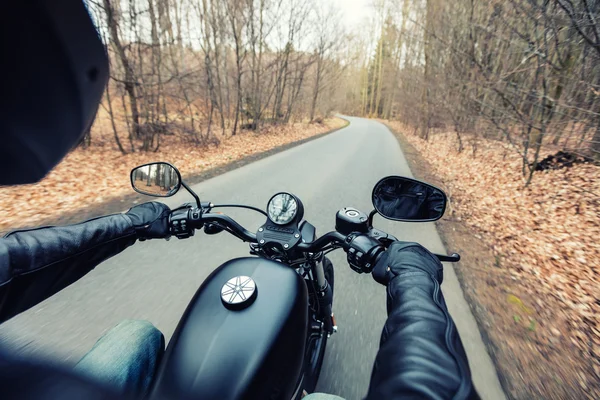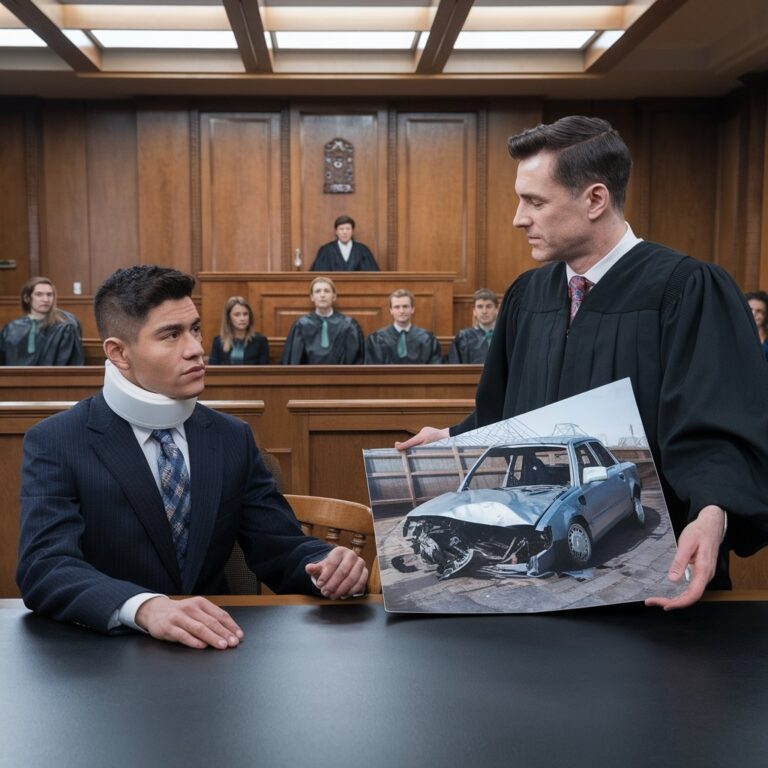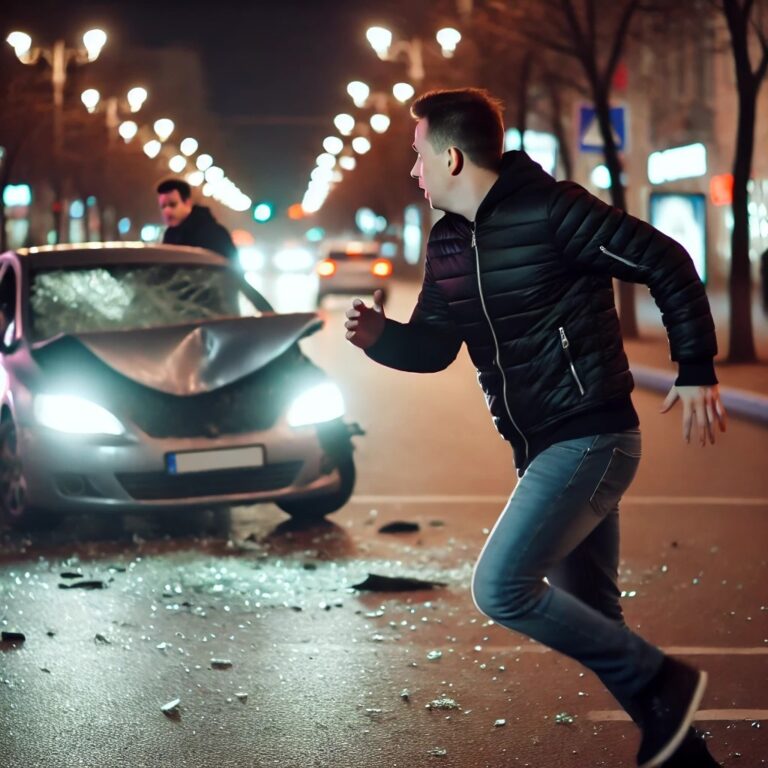Guía 2024: Normativas de trafico para motocicletas
Riding a motorcycle involves more than feeling the wind on your face; It is knowing and respecting a set of traffic regulations for specific motorcycles that guarantee our safety and that of others. Throughout this article, we will break down the rules of the game: from required equipment to how to act legally after an accident.
Let’s dive into legal responsibilities, motorcyclist rights, and how preventive maintenance not only keeps you safe but also within the legal framework. Additionally, we will explore why understanding these rules can be your best defense or support in complicated situations.
Table Of Contents:
- Importance of Knowing Traffic Regulations for Motorcycles
- Mandatory and Recommended Equipment for Motorcyclists
- Specific Regulations on Circulation and Maneuvers
- Legal Responsibilities and Rights of the Motorcyclist
- Influence of Regulations on the Determination of Responsibilities
- Preventive Maintenance and Periodic Review of the Motorcycle
- Seeking legal help after an accident
- Frequently asked questions regarding Motorcycle Traffic Regulations
- Conclusion
Importance of Knowing Traffic Regulations for Motorcycles
Knowing how to move on a motorcycle is not only a matter of balance and courage, but also knowing the rules of the game. Motorcycle traffic regulations are your treasure map to navigate the urban jungle without ending up like the ill-fated protagonist of a cheap movie.
Each country has its own code, but there is a global consensus: the helmet, respect for speed limits and specific signs. But it doesn’t all end here. Did you know that in some places it is prohibited to carry passengers under a certain age? Or that the use of a reflective vest may be mandatory even during the day.

Mandatory and Recommended Equipment for Motorcyclists
We know that riding a motorcycle gives you an incredible feeling of freedom, but that fresh breeze tastes better when you are well equipped. Here we tell you what you can’t miss before starting.
Helmets: Your Best Copilot
The helmet is your shield on the asphalt. Not only is it mandatory by law, but choosing an approved one can be the difference between a scare and something much more serious. Make sure it is DOT or ECE certified.
But what if we give it a plus? Helmets with integrated communication systems are not mandatory, but imagine coordinating with your friends on the road without having to signal as if you were directing traffic.
Appropriate Clothing: More Than A Question Of Style
Dressing for driving goes beyond black leather and heavy boots (although we admit they look cool). Good gear includes jackets, pants, and gloves designed specifically for motorcyclists; all of them with integrated protections in critical points such as elbows, back or knuckles. This means greater safety without sacrificing comfort or mobility.
Now, reflective vests may seem like strange accessories outside of the workplace but trust me when I say: you want to be seen. Especially at dusk or on cloudy days, these vests do wonders by increasing your visibility to other drivers.
Specific Regulations on Circulation and Maneuvers
When we talk about motorcycles, driving and maneuvering on the road has its own set of rules. These not only seek to protect the motorcyclist, but also to guarantee safe vehicular flow for everyone.
Safe Overtaking
Overtaking is a maneuver that must be carried out with extreme care. The regulations clearly specify when and how you can overtake other vehicles to avoid accidents. A practical tip is to never assume that you have been seen; Make sure you are visible and indicate your movements in advance.
Another vital recommendation is to check blind spots before making any movement. Although it may seem basic, this simple act can save lives.
Correct Use of Lanes
Unlike cars, motorcycles can make more flexible use of the lane due to their small size. However, this does not mean complete freedom on the road. There are clear regulations regarding correct lane use by motorcycles, including specific prohibitions against dangerous practices such as weaving between lanes during traffic jams or passing lanes.
Knowing where to position yourself within the lane is also a crucial part of defensive driving: staying visible to other drivers and anticipating potentially dangerous situations are key skills that every motorist should master.
Legal Responsibilities and Rights of the Motorcyclist
Knowing your legal responsibilities and rights as a motorcyclist is crucial. Not only does it keep you safe on the road, but it also protects your pocket in the event of an accident.
The Security Team: Your First Line of Legal Defense
Wearing the right equipment is not just a matter of personal safety; It also has legal implications. In many jurisdictions, not wearing a helmet or reflective vest can significantly reduce compensation in the event of an accident. Always make sure you meet the minimum requirements to avoid complications.
But wearing the right equipment goes beyond the helmet. Gloves, boots and jackets designed specifically for motorcyclists can be crucial during post-accident negotiations.
How to Act After an Accident: Know Your Rights
If you are involved in an incident, knowing your rights is vital. For example, you have the right to request a copy of the police report, which is essential when filing claims with insurers or during legal proceedings.
It’s also important to remember that you can dispute fines and violations if you believe they have been imposed unfairly. For the latter, it is invaluable to have specialized legal advice as it could positively influence the final result.
Influence of Regulations on the Determination of Responsibilities
Understanding how the rules affect who is responsible after an accident is not only helpful, but vital. Here we explain why.
The Law as a Guide in Accident Cases
When it comes to determining liability, laws and regulations are our best friends. They act as a compass that guides us through the complex legal world after a motorcycle incident. But did you know that simply knowing these rules can tip the balance in your favor? Indeed, being informed about what the current regulations say gives you a considerable advantage.
Now, if you decide to ignore them or simply prefer to live on the edge without paying attention to them, you could find unpleasant surprises when you least expect it. The law makes no exceptions for the unwary.
Your Equipment: More Than Physical Protection
Wearing the right equipment goes beyond protecting yourself physically; It also protects your legal rights in the event of an accident. An approved helmet and the rest of the necessary equipment can not only save your life but also strengthen your position in any legal dispute related to specific regulations on road safety for motorcyclists.
Preventive Maintenance and Periodic Review of the Motorcycle
Imagine that your motorcycle is like a superhero. Yes, that’s right, but even superheroes need some TLC to keep saving the day. This is where preventive maintenance and periodic reviews come into play.
Importance of Preventive Maintenance
Your motorcycle takes you everywhere, right? To keep it running smoothly, you have to give it love regularly. This means checking the oil, checking the brakes, and making sure the lights are working properly. A well-maintained vehicle not only ensures safe driving but also prolongs its useful life.
But that is not all; Staying up to date with maintenance can save you money in the long run. Prevention will always be cheaper than repairing major damage caused by negligence.
How to Conduct an Effective Periodic Review
Here comes the fun: getting to work. Start with basic things like checking your tire pressure regularly and visually inspecting any part of your bike for leaks or abnormal wear.
Don’t forget to check your owner’s manual to find out when more in-depth checks are due for your specific model. If something is beyond your mechanical skills, better leave those jobs to the professionals.
Seeking legal help after an accident
When you have a motorcycle accident, the first thing is to make sure you are okay. But afterward, thinking about seeking legal help can be crucial. This is because laws and regulations specific to motorcyclists can complicate the claims process.
Finding a motorcycle accident lawyer not only gives you an advantage but also peace of mind. These professionals know the regulations inside out and how they affect your case. For example, they will know how to argue about the importance of mandatory equipment if this factor influenced the incident.
Frequently asked questions regarding Motorcycle Traffic Regulations
What are the traffic rules for motorcycles?
Always wear a helmet, respect the speed limits and do not drive between lanes. Safety is first.
What are the rules for driving a motorcycle?
Wear full protective equipment, follow traffic signs and keep distance from other vehicles. Preventing accidents is key.
What are the rules of behavior for motorcyclists?
Be courteous on the road, use indicators when changing direction, and avoid dangerous maneuvers. Respect saves lives.
What is mandatory to ride a motorcycle?
Approved helmet, up-to-date vehicle documentation, current insurance and lights on even during the day. Comply with the law.
Conclusion
Knowing the traffic regulations for motorcycles is vital. It is the key to traveling safely and securely on the roads.
Learning about mandatory equipment, such as helmets and reflective vests, keeps you safe. Do not forget.
Mastering specific traffic rules improves your driving. Always keep it in mind.
Understanding your legal responsibilities and rights strengthens your position in any dispute or accident. Remember it well.
Maintaining your motorcycle is not only taking care of it; is to comply with the law and ensure safe travel. Never overlook it.
Asking for legal help after an incident can be decisive in how everything is resolved. Never underestimate its value.





